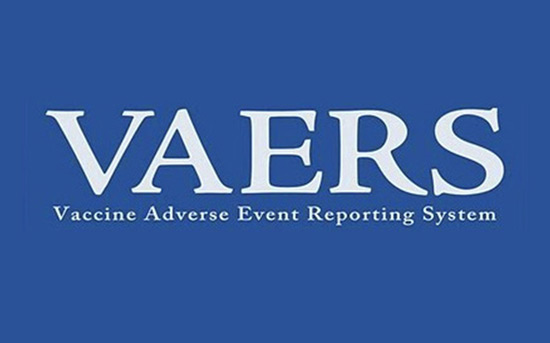As COVID-19 vaccines are being rolled out and given to millions of Americans in every state, it is critical that doctors and other medical workers who are administering the vaccines actively report every serious health problem, injury and death that happens after vaccination to the federal Vaccine Adverse Event Reporting System.
Known as VAERS,1 the centralized vaccine reaction reporting system was created under the National Childhood Vaccine Injury Act of 1986.2,3 If you get a vaccine, including a COVID-19 vaccine, and your health deteriorates within hours, days or weeks of being vaccinated, the person who gave you the shot is required by federal law to file a report with VAERS.4
If he or she refuses to file a vaccine reaction report, you can do it yourself. Click to learn how to report a vaccine reaction to VAERS.
DPT Vaccine-Injured Children’s Parents Got VAERS in 1986 Act
In 1982, when Kathi Williams and I joined with other parents of DPT vaccine-injured children and founded the educational charity known today as the National Vaccine Information Center,5 we discovered there was no centralized vaccine reaction reporting system in the U.S. and no requirement for doctors to report vaccine reactions.
Back then, the government’s Monitoring System for Adverse Events Following Vaccination6 was split into two parts: Doctors vaccinating children in public health clinics were supposed to report serious vaccine reactions, injuries and deaths to the Centers for Disease Control; and doctors in private practice and vaccine manufacturers could choose to report to the Food and Drug Administration7,8 — but there was no requirement to report vaccine reactions.

As parents who had watched our children have serious reactions and regress into chronic poor health after DPT shots,9,10 we argued that every vaccine provider and every vaccine manufacturer should be required to report vaccine reactions, injuries and deaths to the government.
To ensure transparency, we wanted those vaccine reaction reports to be accessible to the public and to independent researchers investigating vaccine safety issues. We also wanted a way for individuals who had experienced a vaccine reaction to be able to file a vaccine reaction report themselves if a vaccine provider refused to do it.
That is why we worked with Congress in the early 1980s to secure vaccine safety informing, recording, reporting and research provisions in the 1986 Act.11,12,13
We insisted that the government publish written information describing vaccine reactions and disease risks to be given to parents before children are vaccinated;14 that doctors and other vaccine providers be required to keep a permanent record of all vaccines given and the manufacturer’s name and lot number;15 and that serious health problems following vaccination be recorded in the child’s permanent medical record, along with the requirement that vaccine providers and manufacturers be required to report adverse events to a centralized vaccine reaction reporting database monitored by health agencies and open to the public.16
Ultimately, Congress agreed with parents that federal health agencies should create a new centralized Vaccine Adverse Event Reporting System. VAERS was finally launched in 1990 — four years after the 1986 Act was passed.17
VAERS: A Post-Marketing Vaccine Safety Surveillance Tool
VAERS records the timing of the vaccination and onset of the adverse event; the age and current illnesses or medications taken by the person who reacted; past history of vaccine reactions; the name of the state where the person lives and other important information to help record and evaluate reported vaccine reactions.18,19

CDC officials say that, “about 85 to 90 percent of the reports [to VAERS] describe mild side effects such as fever, arm soreness and crying or mild irritability. The remaining reports are classified as serious, which means that the adverse event resulted in permanent disability, hospitalization, life-threatening illness or death.”20
Government officials repeatedly emphasize that vaccine-related injuries and deaths reported to VAERS are rarely caused by the vaccine.21,22,23
The reality is that federal health agencies are unable to follow up every vaccine reaction, so the system remains a broad post-marketing surveillance tool for picking up red flags that signal unusual or frequent vaccine complications, which may not have been identified in prelicensing clinical trials24 or — in the case of COVID-19 vaccines — were not identified prior to the FDA granting vaccine manufacturers an Emergency Use Authorization to distribute experimental COVID-19 vaccines.25
And because VAERS is open for public view and analysis, it is an invaluable database for research and public education.26,27,28,29 You can search the VAERS database of vaccine reaction reports filed since 1990 by going to NVIC.org and accessing the user-friendly MedAlerts search engine.
No Legal Sanctions for Doctors Failing to Report to VA
ERS
Sadly, even though it has been a federal law for vaccine providers and vaccine manufacturers to report to VAERS for more than three decades, there are no legal consequences for failing to report. A 2011 federally funded study found that less than 1% of vaccine reactions that happen in the U.S. are ever reported to VAERS.30
That’s because Congress made it a federal requirement in the 1986 Act to report but did not include legal penalties when vaccine companies or vaccine providers fail to report. The result is that 99% of vaccine reactions, including injuries and deaths, which are taking place every day among the highly vaccinated U.S. population, go unreported.
Reporting to VAERS Should Be a Priority for COVID-19 Vaccines
Today, the U.S. is operating under a public health emergency declaration31 and there is an even greater need to step up efforts to report vaccine reactions to VAERS, especially injuries and deaths, that occur after vaccination. COVID-19 vaccines were fast tracked to market in record-breaking time.32,33,34,35 Most of the participants in clinical trials were healthy people between 17 and 55 years old.36,37

This means that while COVID-19 vaccines are being given to millions of Americans, VAERS becomes an extremely important mechanism for detecting a pattern of vaccine-related serious health problems that may not have been detected in clinical trials that only included thousands of subjects and did not include certain high-risk categories of people — like those over age 8538,39 or pregnant women40,41 or people with certain underlying health problems.42,43
During this time when there is a national COVID-19 vaccination campaign underway, you can help by reminding medical workers giving COVID-19 vaccines to file reaction reports with VAERS. Vaccine administrators are not supposed to be making their own judgments about whether an adverse event following vaccination was or was not caused by the vaccine.
They are simply supposed to file a VAERS report as required under the 1986 National Childhood Vaccine Injury Act whenever a person suffers a serious deterioration in health after vaccination, especially if it results in a permanent injury or death.
If a Vaccine Provider Fails to Report to VAERS — DIY
Remember, if you or your minor child have gotten a COVID-19 shot and have suffered a reaction44,45,46,47,48,49,50,51,52,53,54 but the person who gave the vaccine refuses to make a report to VAERS, you can file a report yourself. It’s your health. Your family. Your choice.
